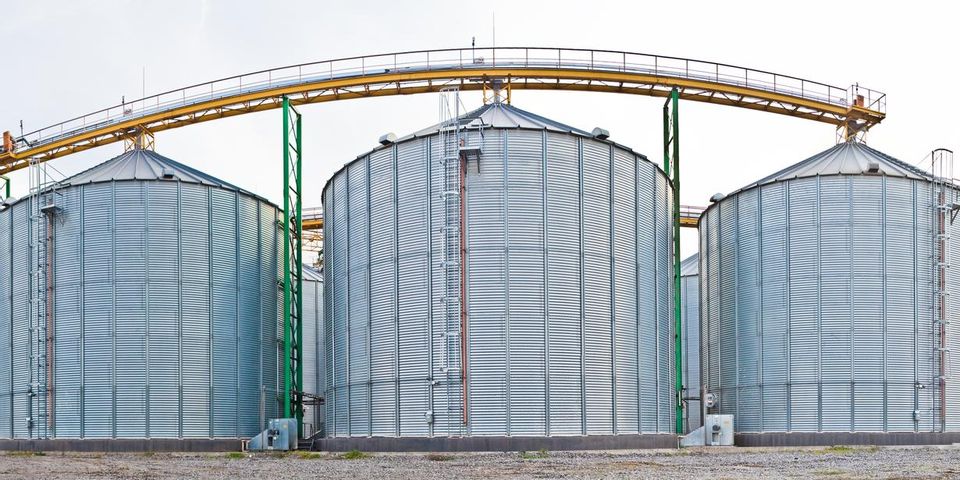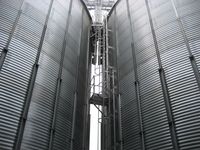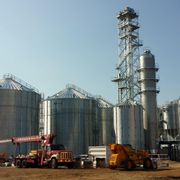
Grain elevators have been an important part of the agricultural industry since the mid-19th century. The earliest version, which was powered by steam, was developed in 1842 in Buffalo, NY. Grain elevator construction has undoubtedly come a long way in the years since, but one factor that hasn’t changed is the role this ingenious invention plays in the success of large-scale agricultural operations.
The Evolution of the Grain Elevator
The completion of the Erie Canal prompted the need for grain elevators. The canal made transporting grain faster and cheaper than ever before, and the invention of the mechanical reaper left farmers with a high volume of grain to transport.
Taking inspiration from steam-powered flour mills, Joseph Dart and Robert Dunbar devised a conveyor belt system to mechanize the unloading process, and grain elevator construction commenced. By 1931, the town of Buffalo had 38 grain elevators in operation. Originally made of wood, they were eventually built with slate and corrugated metal sheets to reduce the risk of fire. Steel was later used, as well, and electricity soon replaced steam to power the machines.
Common Types of Grain Elevators
 Today, there are three primary kinds of grain elevators: country, subterminal, and terminal. Serving as the collection point for rural or railroad-adjacent communities, country elevators can hold more than a million bushels. By providing short-term storage, these elevators allow farmers to strategize their purchase around market fluctuations.
Today, there are three primary kinds of grain elevators: country, subterminal, and terminal. Serving as the collection point for rural or railroad-adjacent communities, country elevators can hold more than a million bushels. By providing short-term storage, these elevators allow farmers to strategize their purchase around market fluctuations.
Subterminal elevators also serve as a safe place to store grain until market conditions improve. They are larger than country elevators and often have blending and cleaning capabilities, which can reduce the volume of the product considerably, so farmers can store more. Terminal elevators, on the other hand, are the largest option for storing grain and can hold at least 20 million bushels. These are located near shipping facilities and make it easy for industrial processors and livestock feed producers to purchase and transport huge quantities at once.
If you need grain elevator construction in Wisconsin, turn to Digman Construction in Platteville. This agricultural contractor specializes in farm setups, feed mills, platforms, conveyors, and towers. It is owned and operated by farmer Robert Digman and strives to complete every project on time and under budget. Visit the website to see some of their more recent projects. Call (608) 348-2231 to discuss your grain elevator construction needs today.
About the Business
Have a question? Ask the experts!
Send your question

